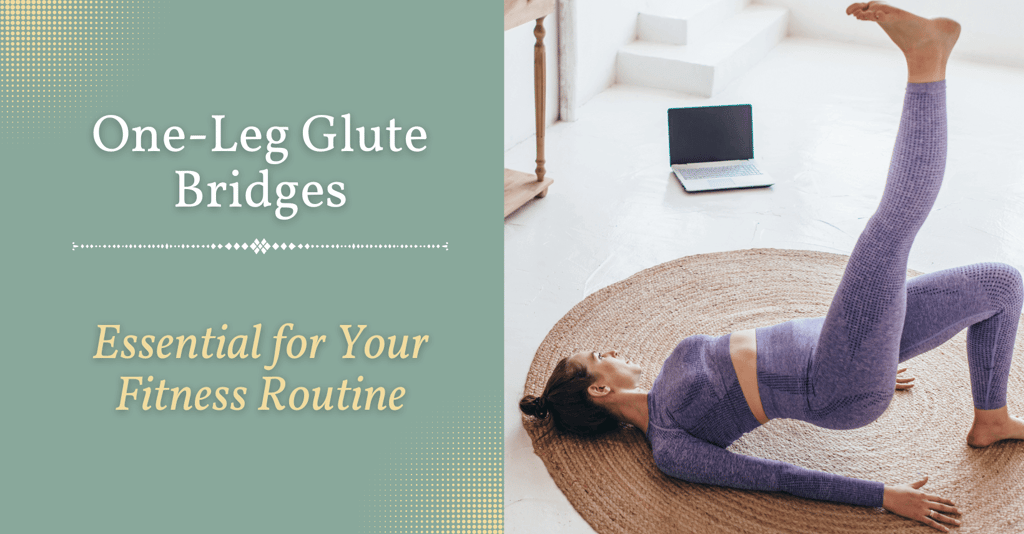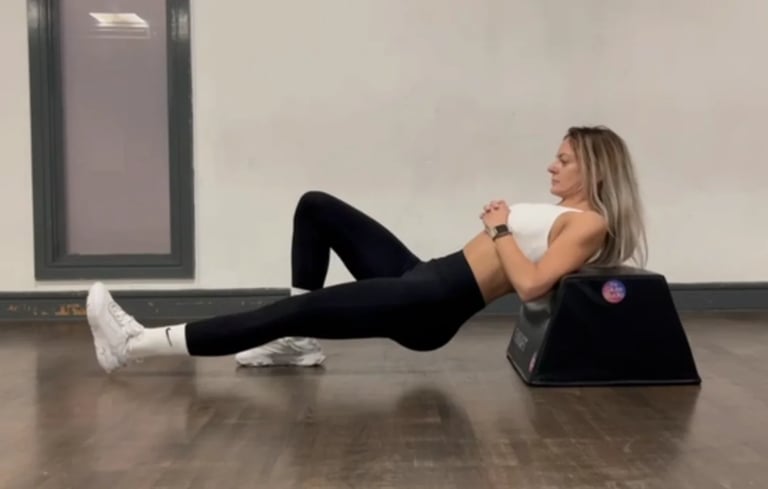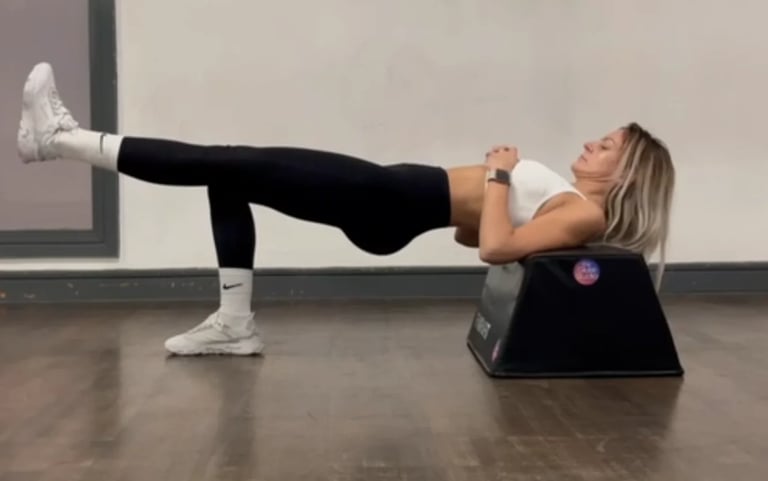Add your promotional text...
The Reason You Should Include One-Leg Glute Bridges In Your Fitness Routine
2/8/20233 min read


Unilateral exercises are exercises that target one limb or one side of the body at a time. These exercises are typically used to address imbalances, improve joint stability, and increase overall strength and balance.
Examples of unilateral exercises include one-leg glute bridges, single-leg squats, single-arm dumbbell presses, single-leg deadlifts, and one-arm row.
These exercises require greater activation of the core muscles. IIt also improves stability in the joints, increases overall functional strength and reduces the risk of injuries
Let’s take one-leg glute bridges as an example, to explain how unilateral exercises work and the importance of including them into your fitness routine.
How To Do One-Leg Glute Bridges Correctly
Lie on your back with legs bent at 90 degrees and feet flat on the floor.
Raise one leg into the air straight and keep your other foot flat on the floor.
If you have any questions or need some assistance, feel free to submit a comment or send us a message here.
One-leg Glute Bridges
One-Leg Glute Bridges is a type of strength training exercise that specifically targets the glutes as well as the hamstrings. It helps to improve strength in the glute muscles, while also working on balance, coordination and stability.
For this exercise, lie on your back (or on a box to support your back), with one knee bent and the other leg off the floor; lifting your hips up towards the ceiling while keeping your other leg up.
Overall, one leg bridges are a versatile and effective exercise that can improve strength, stability, balance, and posture.


Drive your hips up towards the ceiling, using your glutes to lift your body off the ground.
One-Leg Glute Bridges Variations
There are several ways to make one leg glute bridges more challenging:
Increase the weight: You can place a weight or a medicine ball on your hips to increase the resistance
Hold longer at the top: Hold the position at the top of the bridge for a longer period of time to increase the difficulty.
Add an additional movement: Include a leg abduction or a leg extension, to increase the difficulty of the exercise.
Increase the tempo: Performing the exercise at a faster tempo will increase the intensity, which will make it more difficult.
Remember to start slowly and gradually increase the difficulty as you progress. It is important to maintain proper form throughout the exercise, even as you make it more challenging.
In Conclusion
Doing one leg glute bridges will improve overall lower body strength. It also helps to alleviate pain in the lower back and hips and to improve posture. By incorporating one leg glute bridges into your regular fitness routine, you can achieve a stronger, healthier, and more balanced lower body.
Benefits of Adding One-Leg Glute Bridges to Your Workout Routine
One leg bridges it’s an effective unilateral exercise and offers numerous benefits:
Strengthens the glutes: The glutes are a large and important muscle group that play a crucial role in movements - such as running, jumping, and squatting. Doing one leg bridges helps to target and strengthen the glutes, improving athletic performance and reducing the risk of injury.
Improves hip stability: The glutes also play a key role in hip stability, which is essential for maintaining proper posture and avoiding lower back pain. One leg bridges help to improve hip stability.
Increases core stability: To maintain balance and stability while performing the one leg bridge, you need to engage your core muscles. This helps to increase core stability and improve posture and balance.
Targets specific muscle groups: By working one leg at a time, you can target specific muscle groups and correct any muscle imbalances you may have.
Hold for a moment at the top, then lower your body back down to the starting position.
Repeat for 10-12 reps on each leg, focusing on keeping your hips high and your core engaged throughout the movement.


